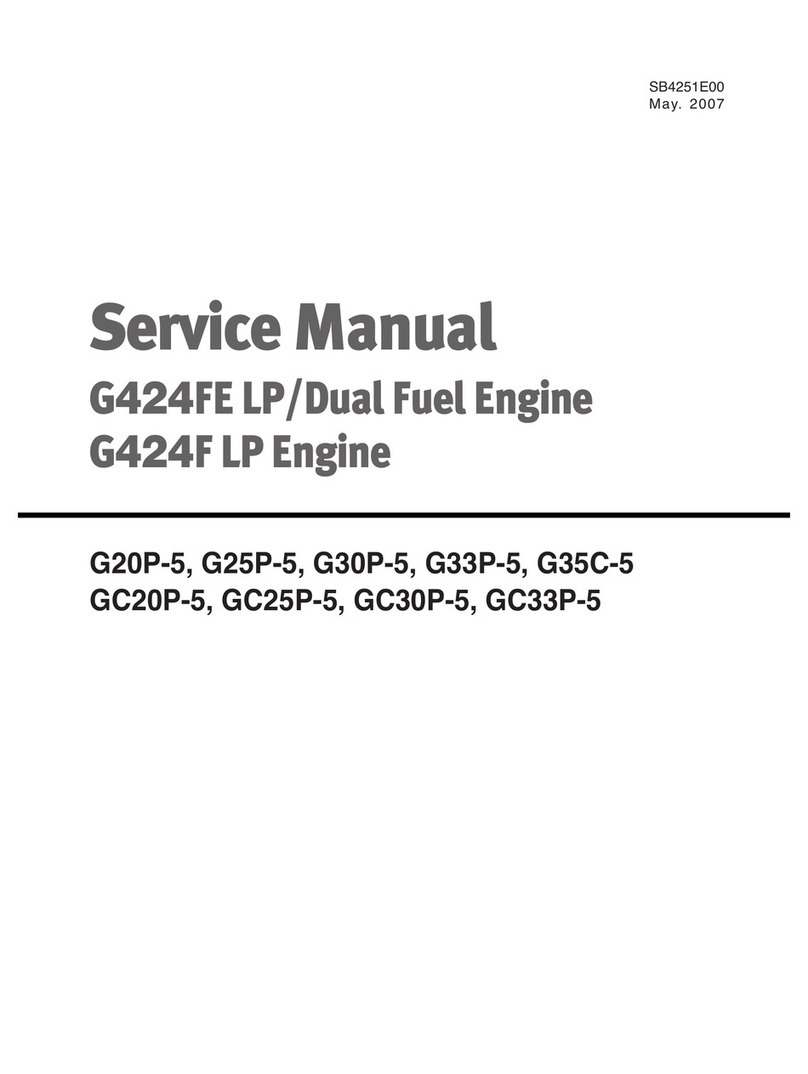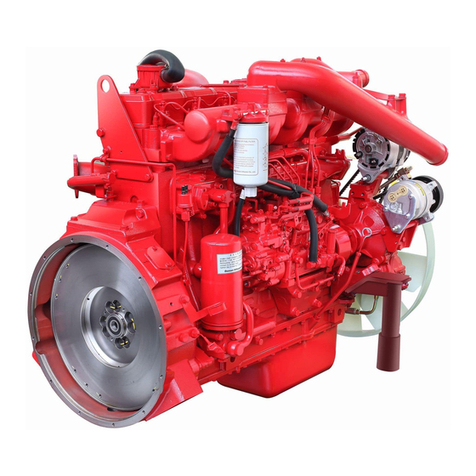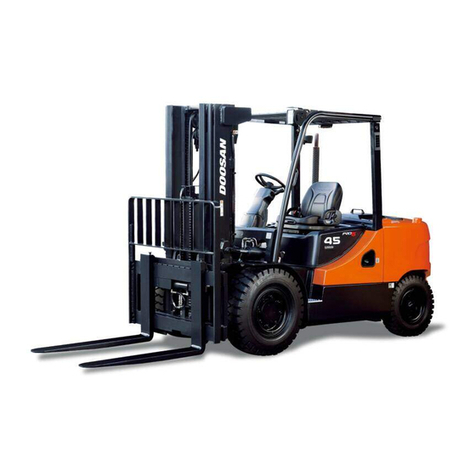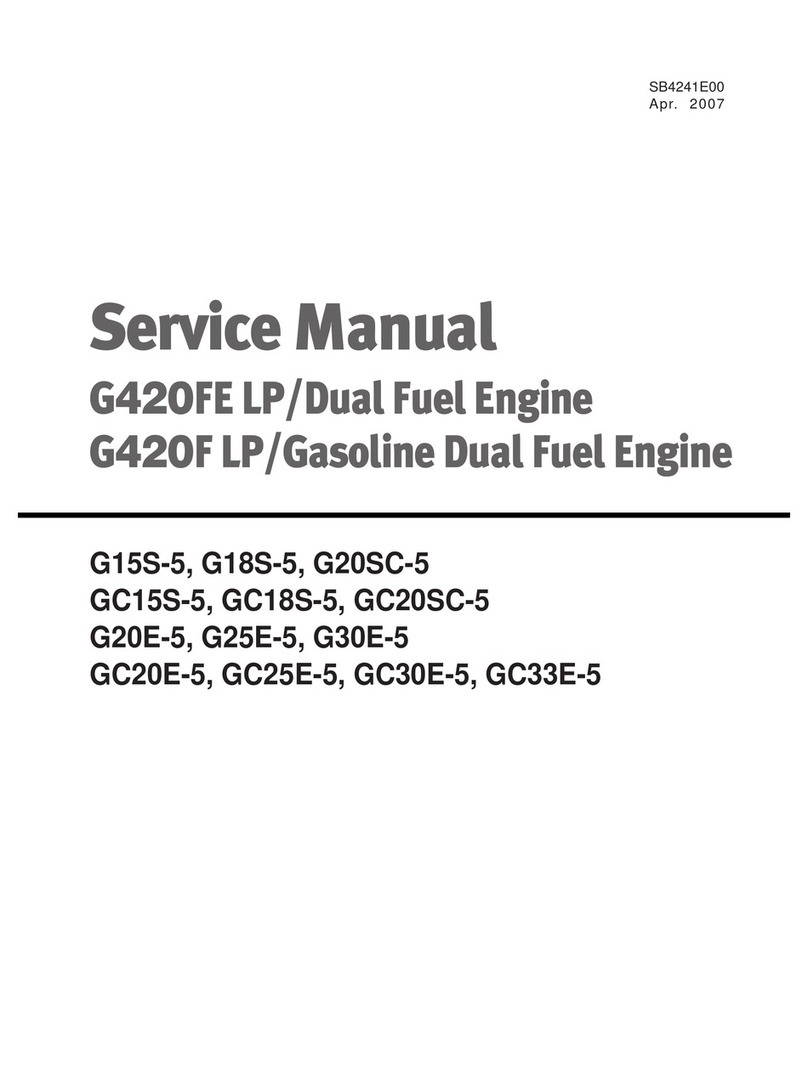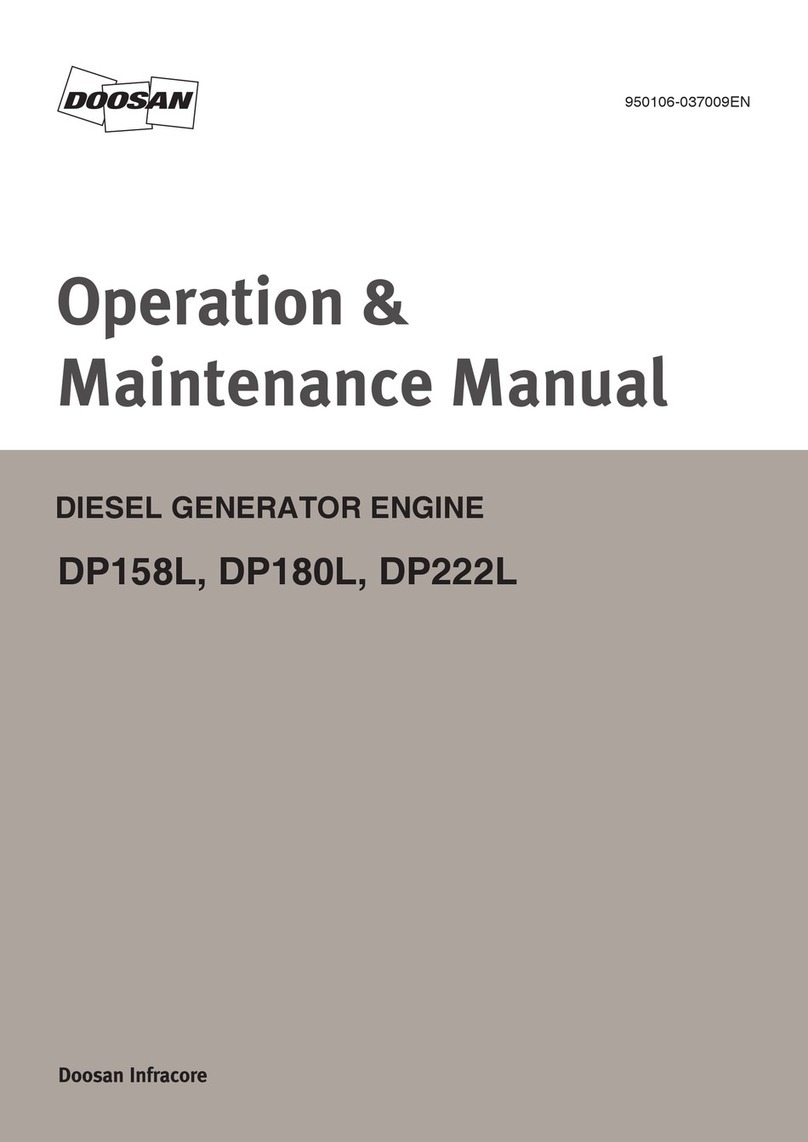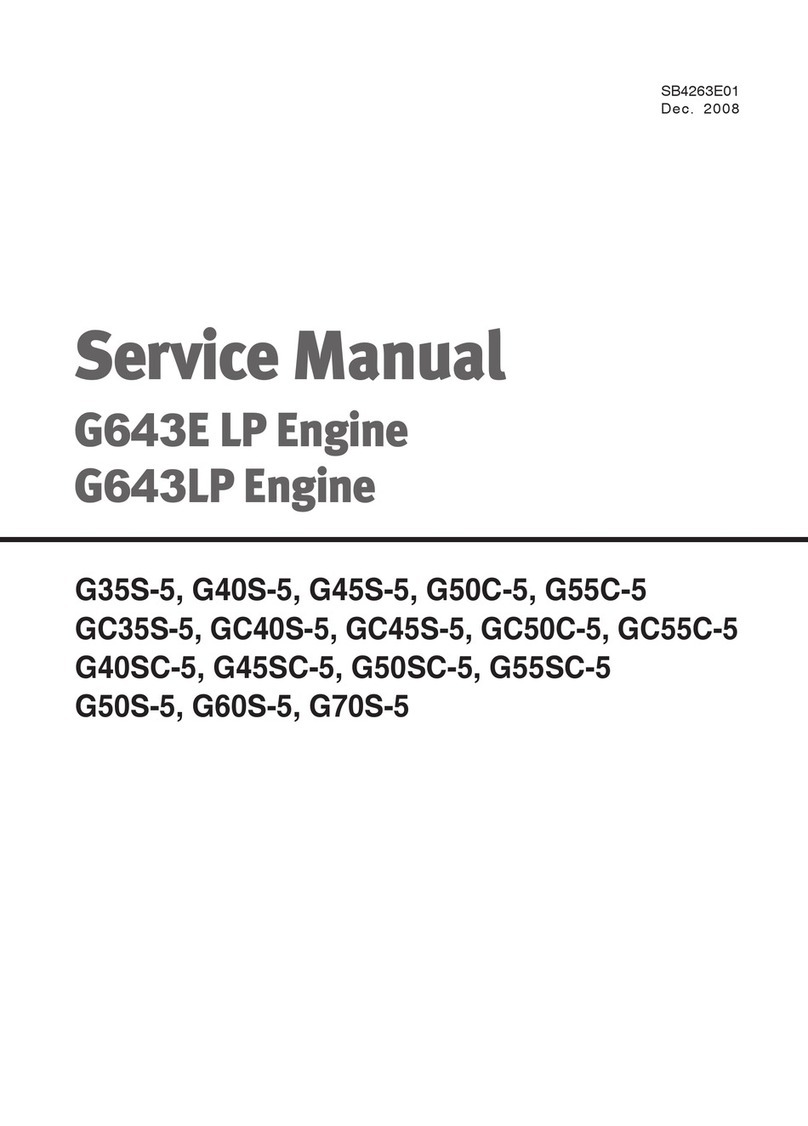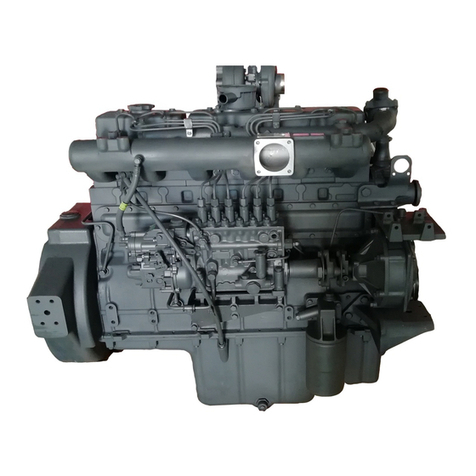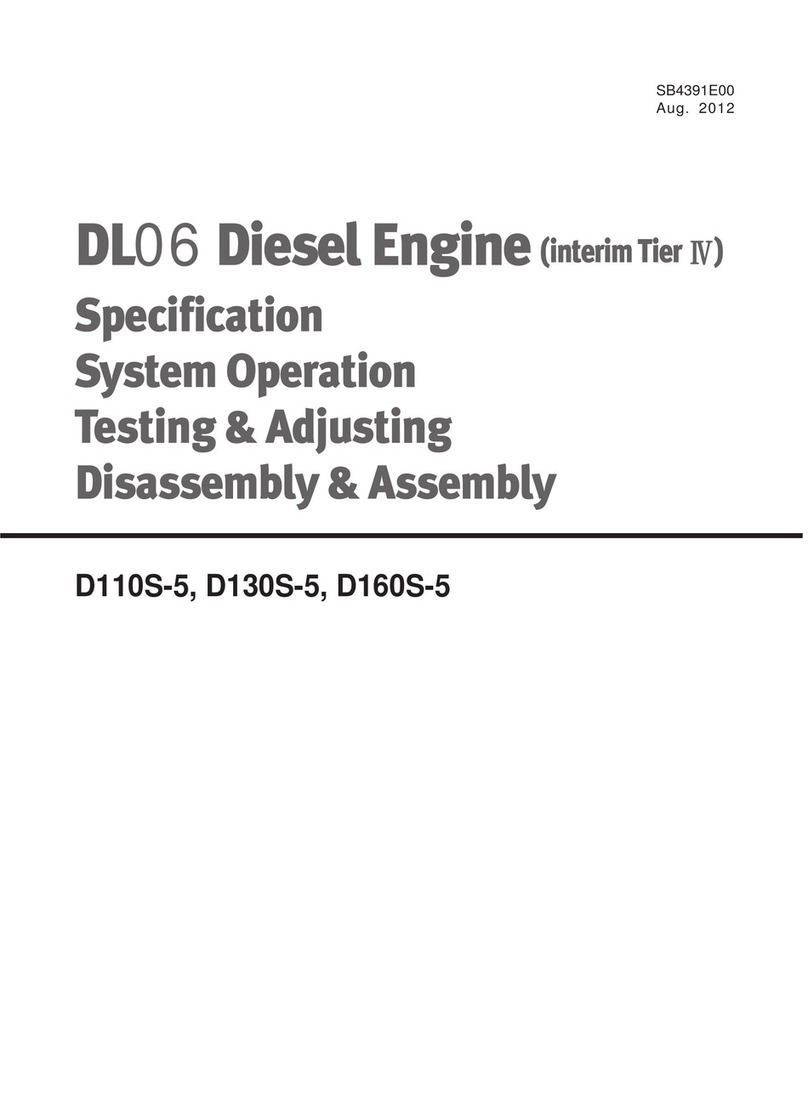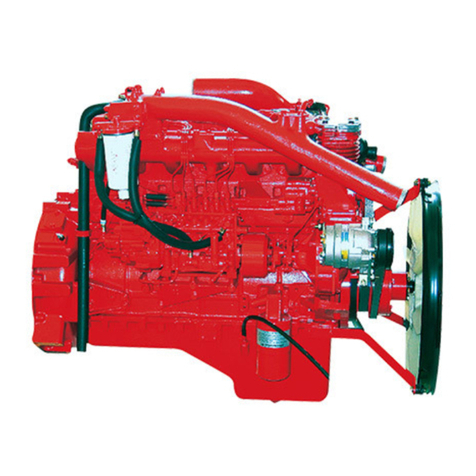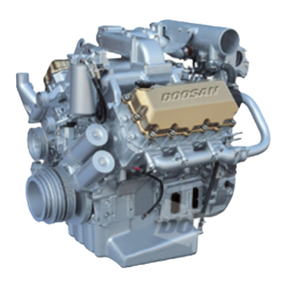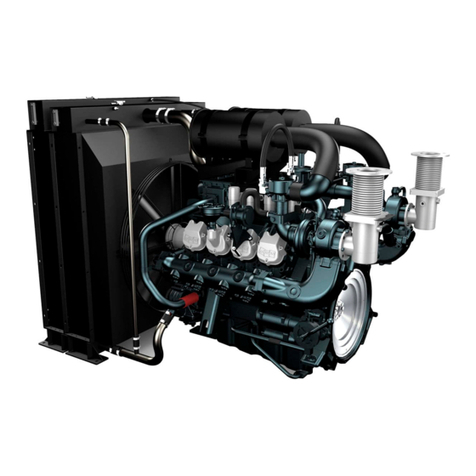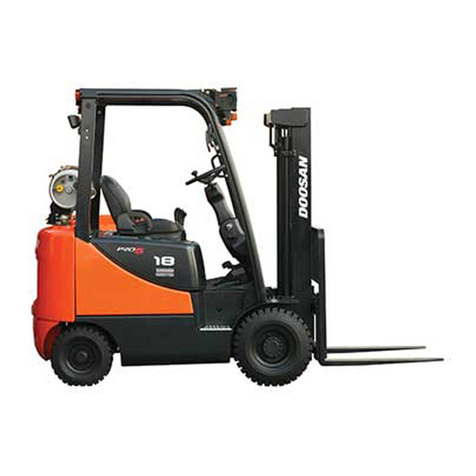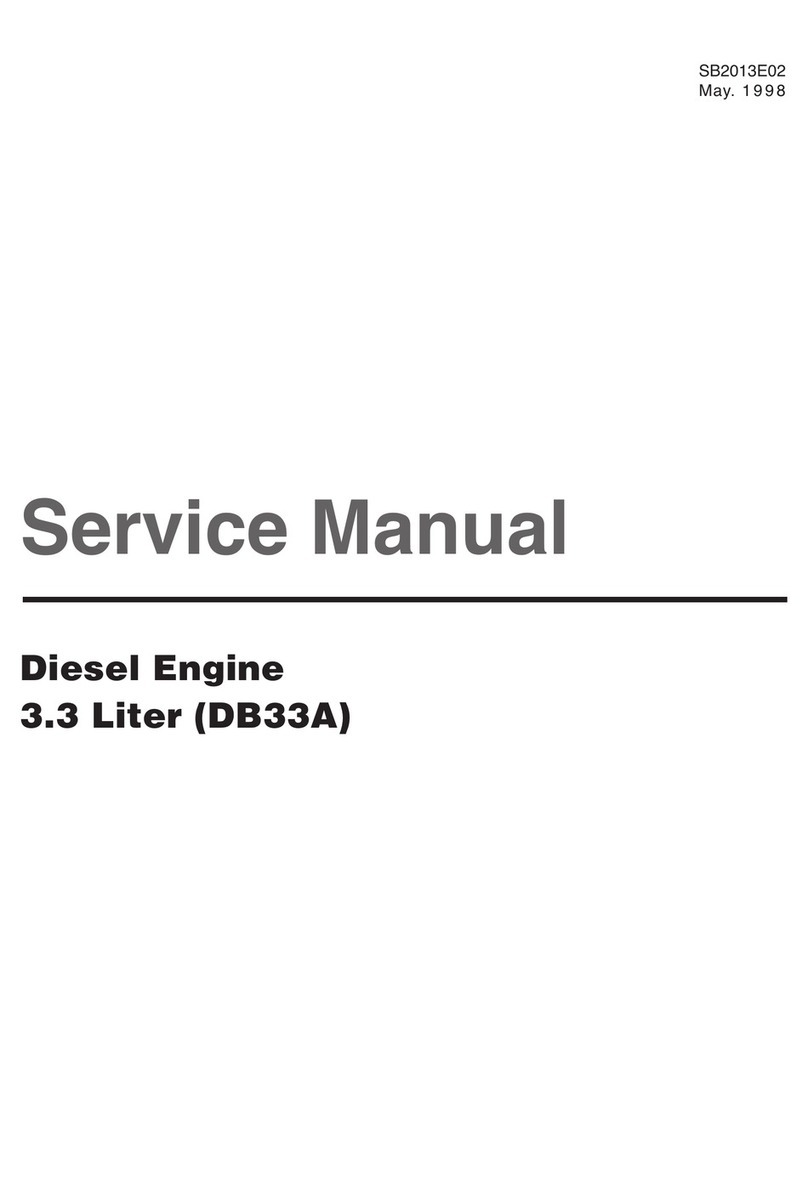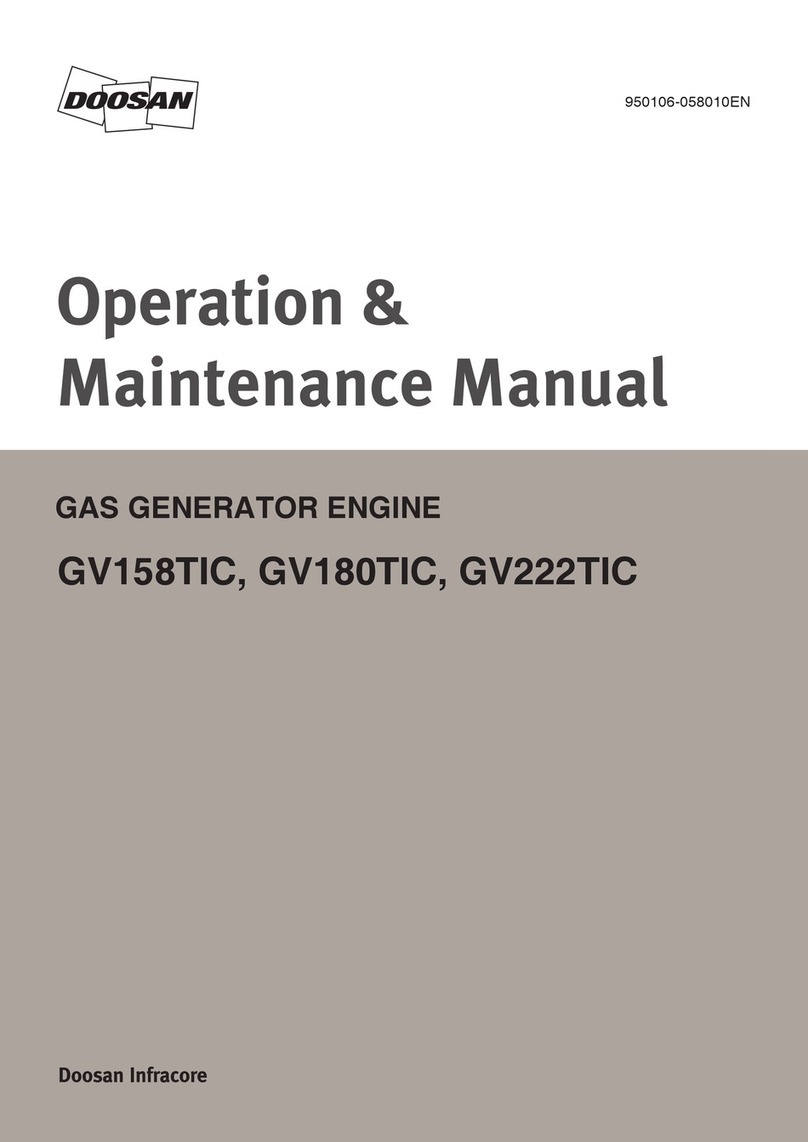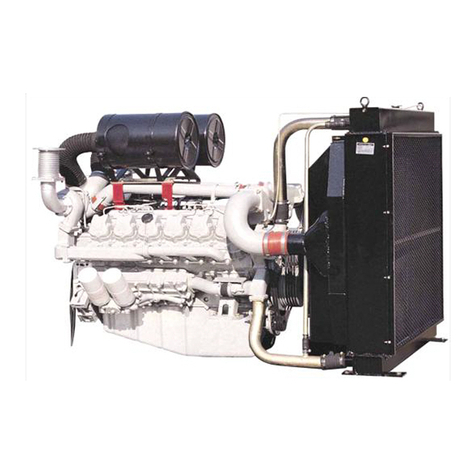•Marine engine Recommendation on applications
The engine must be able to achieve rated engine speed when operated under fully
loaded conditions;
Secondary drive loads must be considered engine horse power which could be available to
drive the primary load. Therefore any such parasitic load requirements must be deducted when
sizing an engine for the primary load.
The engine must be used in accordance with the application guidelines for that
particular rating;
It is important to choose the proper engine rating to provide the optimum performance in a
given application. Ratings below show DOOSAN marine engine guidelines on applications.
(1) Heavy duty
•Operation hours : Unlimited per year
•Average load application : Up to 90%
•Percentages of time at full load : Up to 80%
•Typical gear box ratio : 2.5 ~ 6
(Application: Fishing trawler, Tug boat, Pushing vessel, Cago boat, Freighter, Ferry)
(2) Medium duty
•Operation hours : Up to 3,000hr per year
•Average load application : Up to 70%
•Percentages of time at full load : Up to 30%, 4hrs per 12 hour operation period
•Typical gear box ratio : 2 ~ 3.5
(Application:
Fishing boat, Pilot boat, Escort boat, Passenger boat, Ferry, Cruising Vessel
)
(3) Light duty
•Operation hours : Up to 1,000hr per year
•Average load application : Up to 50%
•Percentages of time at full load : Up to 20%, 2hrs per 12 hour operation period
•Typical gear box ratio : 1 ~ 2.5
(Application:
Fishing boat, Pilot boat, Escort boat, Passenger boat, Ferry, Cruising Vessel
)
- b -
